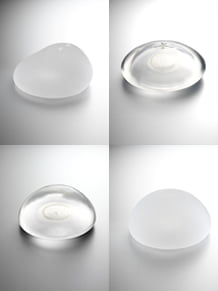
The most common comment we hear from patients worldwide is that if given the chance they would have gone a little bigger. This sentiment is definitely not limited to my practice nor is it even limited to US patients. This is a worldwide dilemma. So why the confusion?
Consider the fact that a majority of patients seeking breast augmentation are looking for a natural result. Many don’t want their friends and family to know for a variety of reasons. Some may think that they will be judged while others simply don’t want the added attention. And so they come in asking for a conservative augmentation and eventually undergo surgery. But, in my opinion, what happens over the first few weeks after that plays the biggest role in their concern of not going big enough. Immediately following your surgery, your breasts are going to be swollen. And the size that you initially chose is now made to look slightly bigger because of this swelling. At this point, a few patients panic thinking that they have gone too big while a majority actually go the other way. They actually begin to like their new enhanced look. Their friends compliment them on their new appearance and they decide that they have made a great decision. But then they begin to heal. And as they do, this swelling goes down a bit along with their cup size. And at this point as they are losing some of the initial volume they begin to worry that they actually didn’t go big enough. Even though they asked for a conservative result, they are surprised at the positive response they have received from their friends, they accepted this size, and now worry that their real size will not be big enough. We affectionately call this “breast greed”. And if you think this doesn’t happen, guess again! I have seen this very issue with even my most conservative patients.
So what do we do? Should we go much bigger for our patients assuming that this will happen and that a much larger size will ultimately correct this concern? Not necessarily. Some patients simply cannot handle a much larger implant because of their anatomy. For some patients, a small implant can look great while a larger implant may make their chest look crowded and even give the impression of added weight. Others with pronounced asymmetry can make that asymmetry even more noticeable with larger implants.
While I haven’t figured out the exact answer to this question, I have refined my approach over the years to address this concern. First, I make an effort at the initial consultation to really listen to my patient and determine not only what she is asking for size-wise but also the factors that may guide me to suggest a particular implant range. Next, I ask her to do a little research and identify 2-3 photos of women whose proportions she feels are close to what she is looking for. I intentionally do not include patient details on my photo gallery (e.g.: cup size/implant size/height/weight) because I feel these to be distracting and something that can really confuse a potential patient. I can’t tell you how many patients I have worked with who came in asking for a specific implant size because their friend had that size and she looked great. The problem with that approach is that everyone is different. Your friend may be taller (or shorter), may have had kids (or not), and probably has a breast tissue consistency entirely different than yours. And so to expect the same results with the same size is simply not reasonable. Instead, I have my patients focus on a “look”. From there, we look at her individual measurements, body shape, lifestyle factors (e.g.: is she a runner and so doesn’t want larger breasts to get in the way), and tissue quality. Then, we choose a specific style of implant based upon the desired look as well as her base width (distance across the breast base) along with a range of sizes. You may notice that I don’t rely on a specific single size but, instead, a size range. This is very important. I use implant sizers for almost every case that affectively allow me to try on different sizes and see which one works best. Using sizers also allows me to address asymmetry of the breasts which most of us already have. In this case, it is not uncommon to use different sizes to accommodate for one breast that is larger than another. Once I adopted this approach, I found that I had far fewer unhappy patients. But in all honesty it hasn’t completely solved the problem.
One of the major concerns still facing Plastic Surgeons worldwide is how to effectively size our patients. My way is only one way but it certainly works for me although not 100%. I will continue to try and develop new ways of sizing that will hopefully get me closer to ideal selection the first time around. Until then, I will keep trying.
I hope this information was helpful and am open to your insights and suggestions. What do you think would help in the sizing process? Feel free to post here or send me a personal email at d[email protected]
Thanks again for your continued support. I look forward to working with you!
